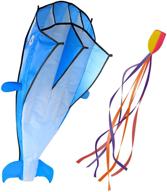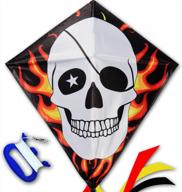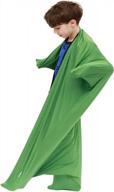
Review on 🦋 HENGDA KITE Butterfly Games and Gorgeous Activities by Alex Winnick

Easy to fly in light winds. Read the 8/31/20 advice for flying in light winds.
4/18/20: This is an amazing kite. I bought this as my first kite in 28 years to have fun while staying at home during the COVID-19 period. The kite can fly in light winds (I can get it flying in 6 mph winds at a city park in Phoenix, Arizona). ). It is not stable in turbulent winds (low altitude). I highly recommend getting a long string for it (400+ feet). Once it reaches a high enough altitude, it flies gracefully for several hours. In addition, it is very easy to assemble (takes a minute) and the material and construction are durable for the price. I've flown almost every day for the last month (about 25 assembly/dismantling cycles) without the quality of the kite deteriorating significantly. I recommend this kite for children and adults. 5/7/20: A few weeks ago we had stronger winds (15 to 20 mph) in Phoenix. The kite flew erratically and crashed after 40 minutes. Upon inspection, I discovered that one of the plastic rods that acted as a frame had torn the seam attaching it to the wing. I was able to fix this easily with a simple saw set. From my observations the kite flies consistently in wind speeds between 6 and 15 miles per hour. As soon as the wind picks up, the kite will start vibrating (fluttering) too much, which puts too much stress on the kite. If you are planning on using this kite in an area with wind speeds in excess of 15mph I would recommend pre-reinforcing the stitching in front of the plastic poles. lost their support. I used an app called Windfinder to keep an eye on the wind speed, wind forecast and plan a kite when the wind is between 6 and 15mph. I hope you enjoy flying this amazing kite. 08/31/20 The kite still flies well. I found a way to set up the kite to fly in light winds (less than 12mph) and strong winds (over 12mph). In the middle of the back there is a piece of plastic with four teeth (there are also two wing bars attached to it) which should be used for tuning. In light winds, turn the black part so that the wings lean towards the main string when connecting. This makes the kite concave and allows it to catch the wind easily. The downside is that in strong winds it causes severe vibration and a choppy flight. Do the opposite in strong winds. Rotate the black piece so that it is at an angle to the main string after the wing rods are joined. This causes the kite to bulge, which helps deflect the wind in strong winds. The downside is that in this configuration it's almost impossible to get airborne in light winds. I hope this tip helps you. 12/29/20 Year-end update. The kite still flies well. Since buying this kite I have moved on to bigger and more expensive kites. Large kites are nice to see in the sky, but they need stronger winds to fly due to their heavier weight. This butterfly kite is still used today when the wind is slower than 10mph.
- Very good price
- Unbelievable price
New products
Comments (0)
Top products in 🪁 Kites & Wind Spinners

🎪 Hengda Kite Pack: Unleash Fun with Long-Lasting Octopus Kids Software!

10 Review

🐬 Frameless Dolphin Breeze Parafoil Kite

9 Review

🪁 Innorock DIY Kites Kids Easy: Unleash Your Child's Creativity with this Simple DIY Kit"

9 Review

Dazzle Your Kids With HONBO Diamond Kites Featuring Skull Design

10 Review
Another interesting products

Dynamic Movement Sensory Sox For Kids 6-9 Years - Updated Version, Medium, 47''LX27''W Green By Sanho

22 Review

🏠 Innovative Indoor Outdoor Playhouse for Toddlers: Tunnel Fun!

9 Review

GOGOSO Pink Balls For Ball Pit - Pack Of 100 Ball Pits Ball Pink, BPA Free Plastic Ball Toys Crush Proof Ocean Balls Phthalate Free For Girls Toddlers Indoor Outdoor - Pearl Pink Colors

10 Review

Zippered FoxPlay Basketball Ball Pit: Unleash Fun and Excitement!

9 Review

